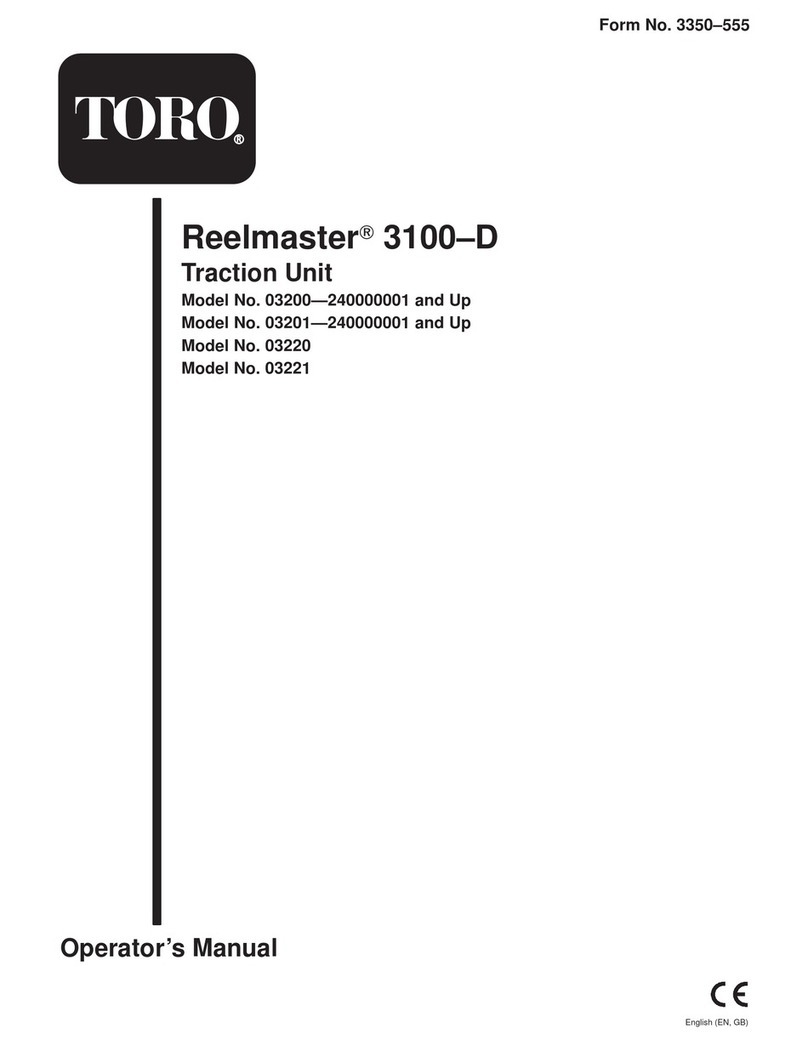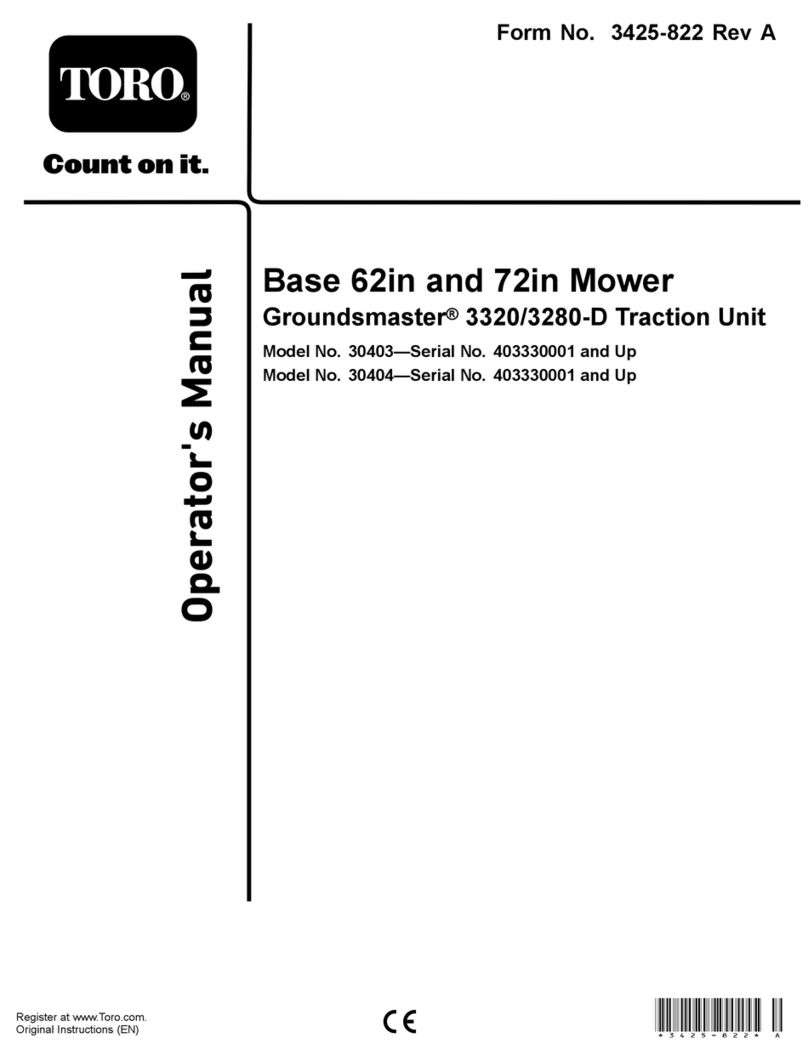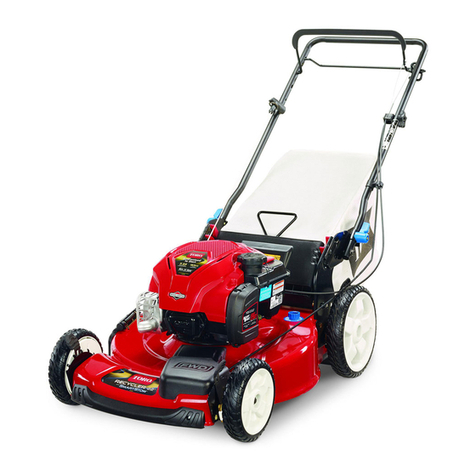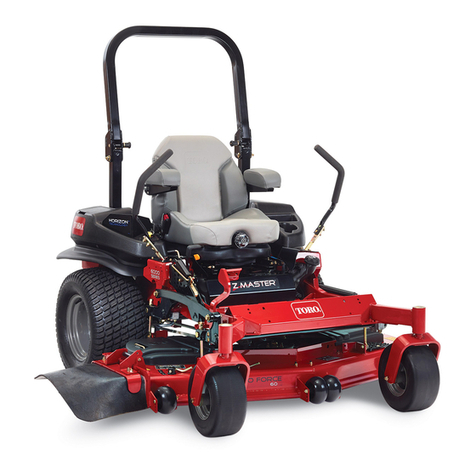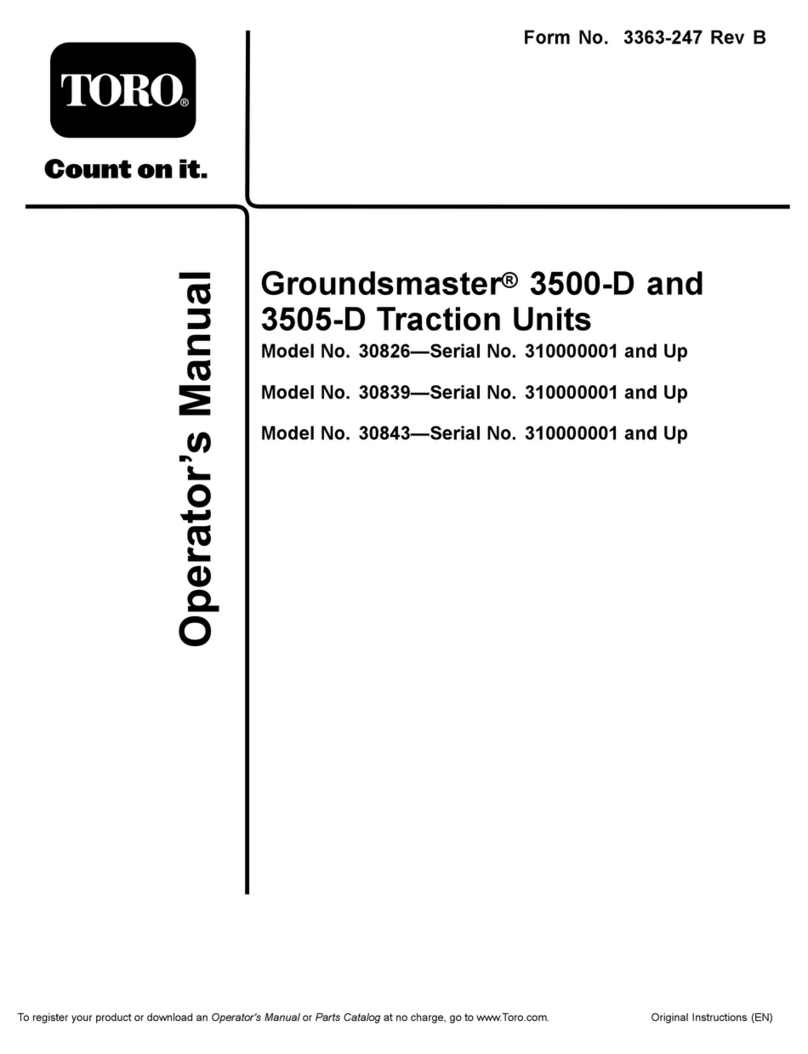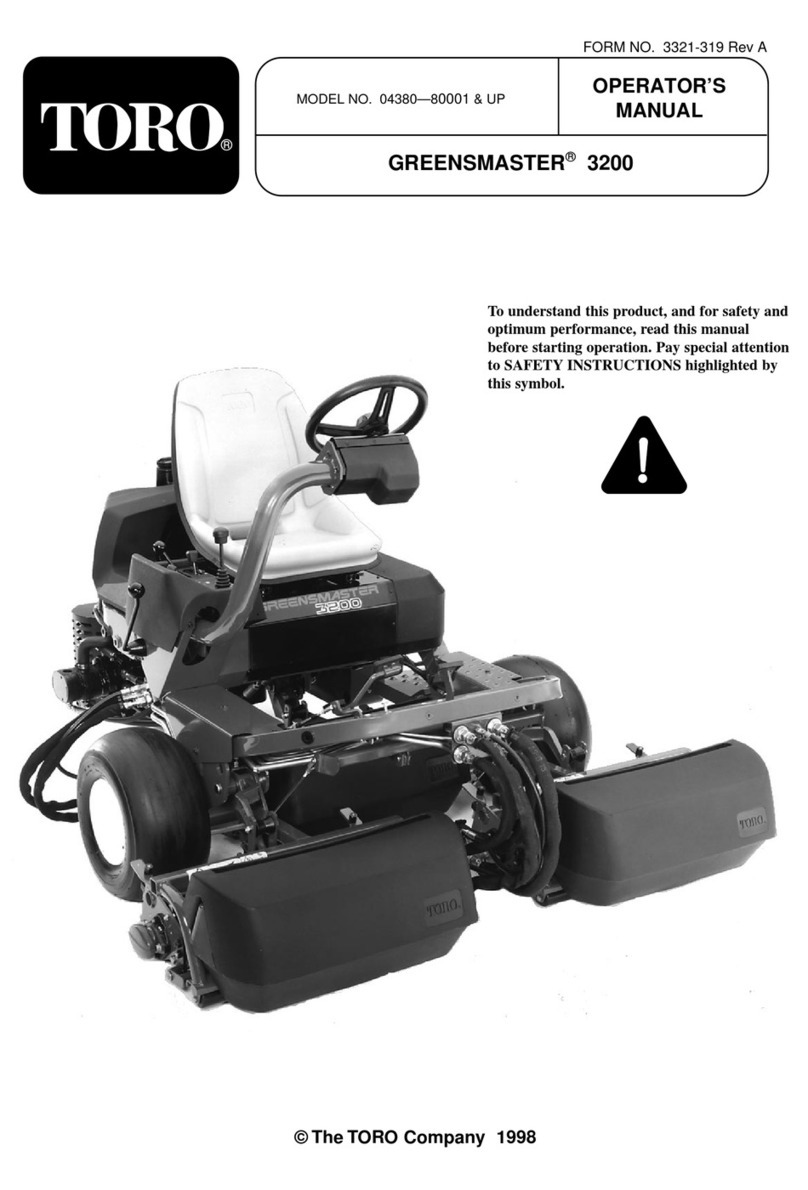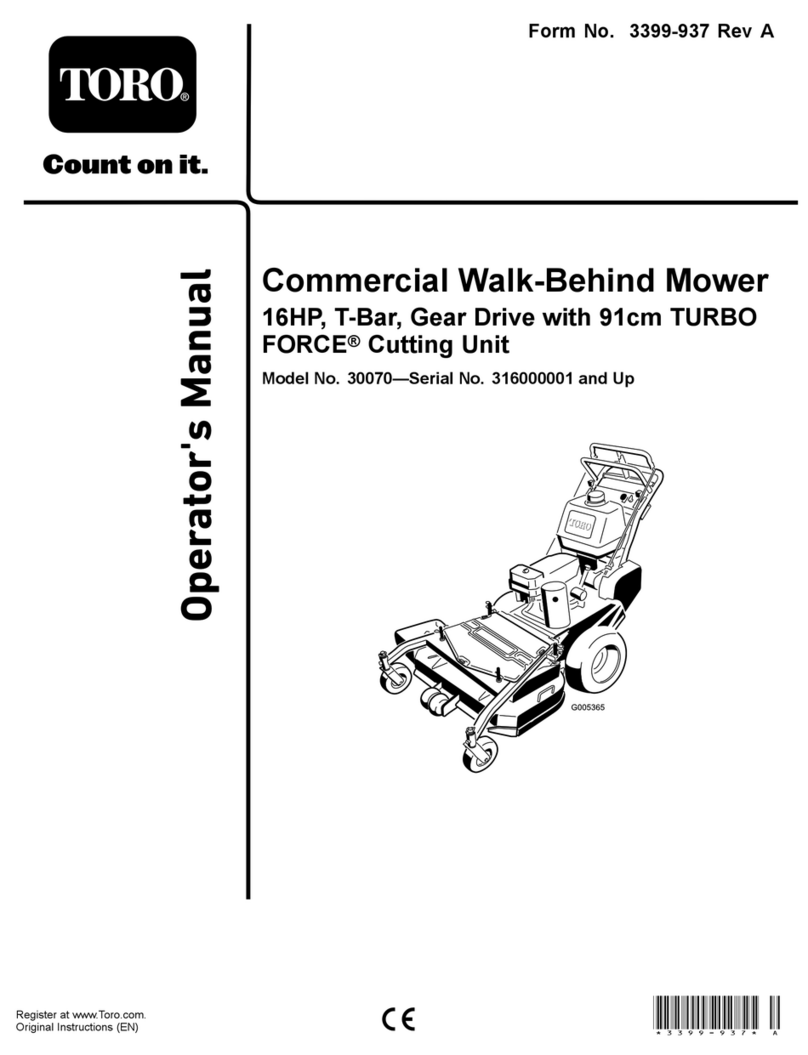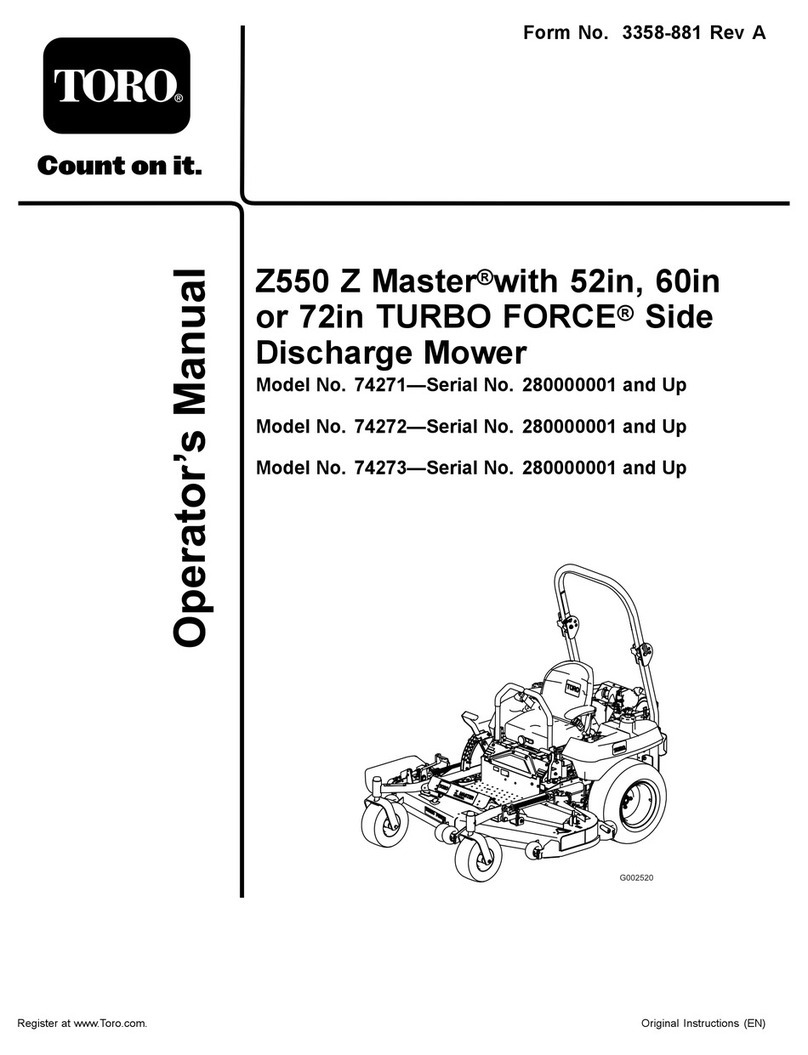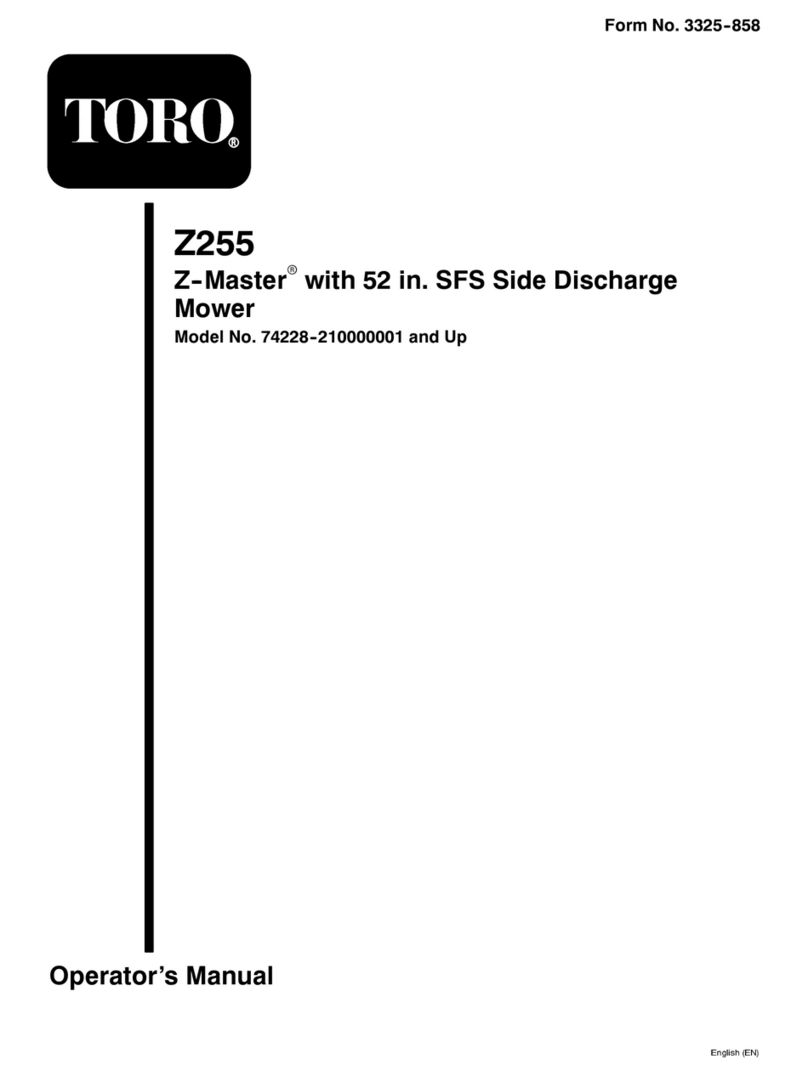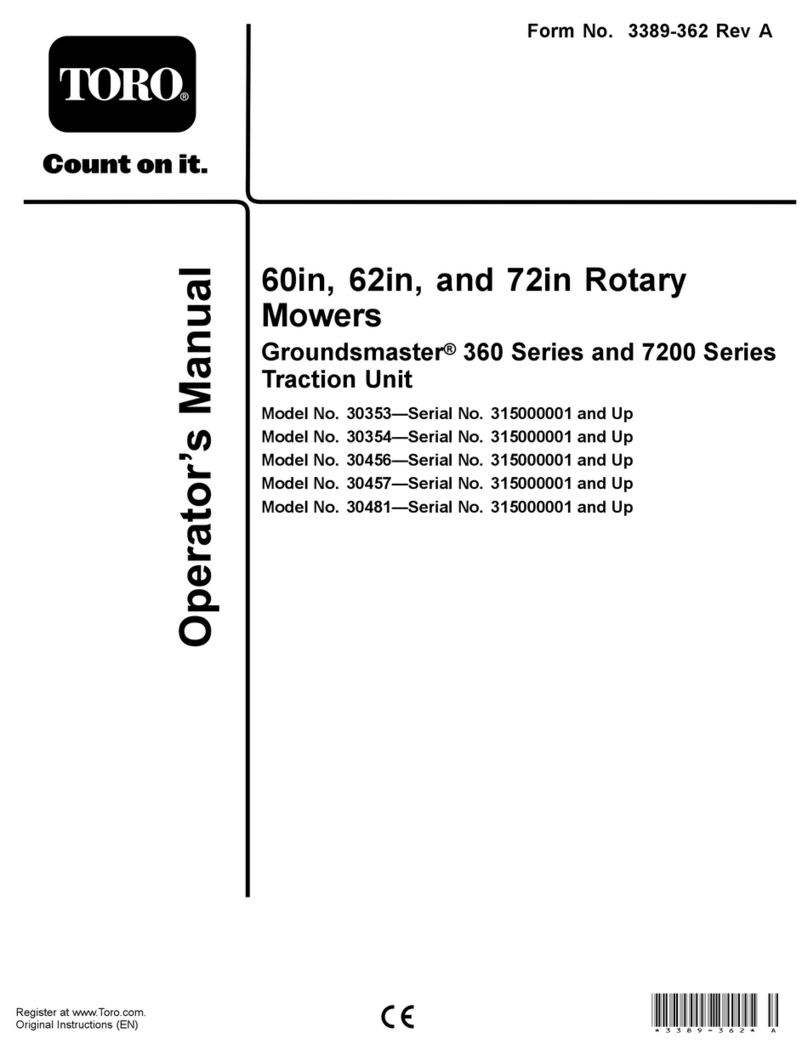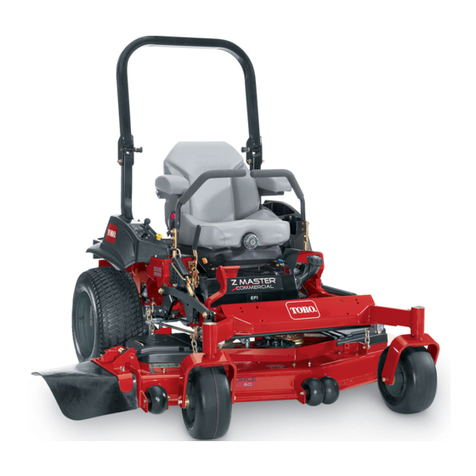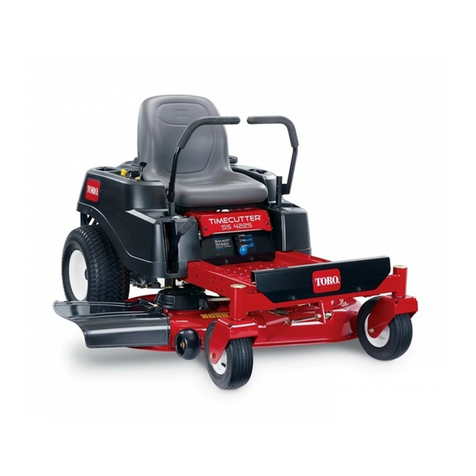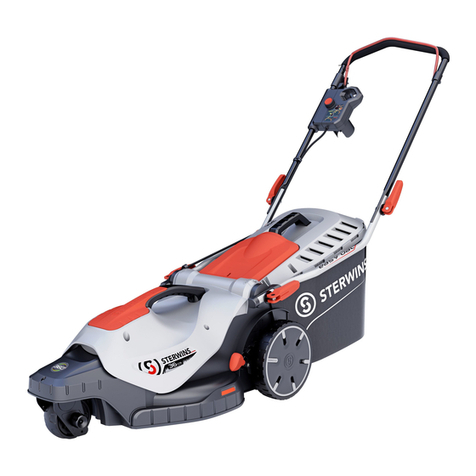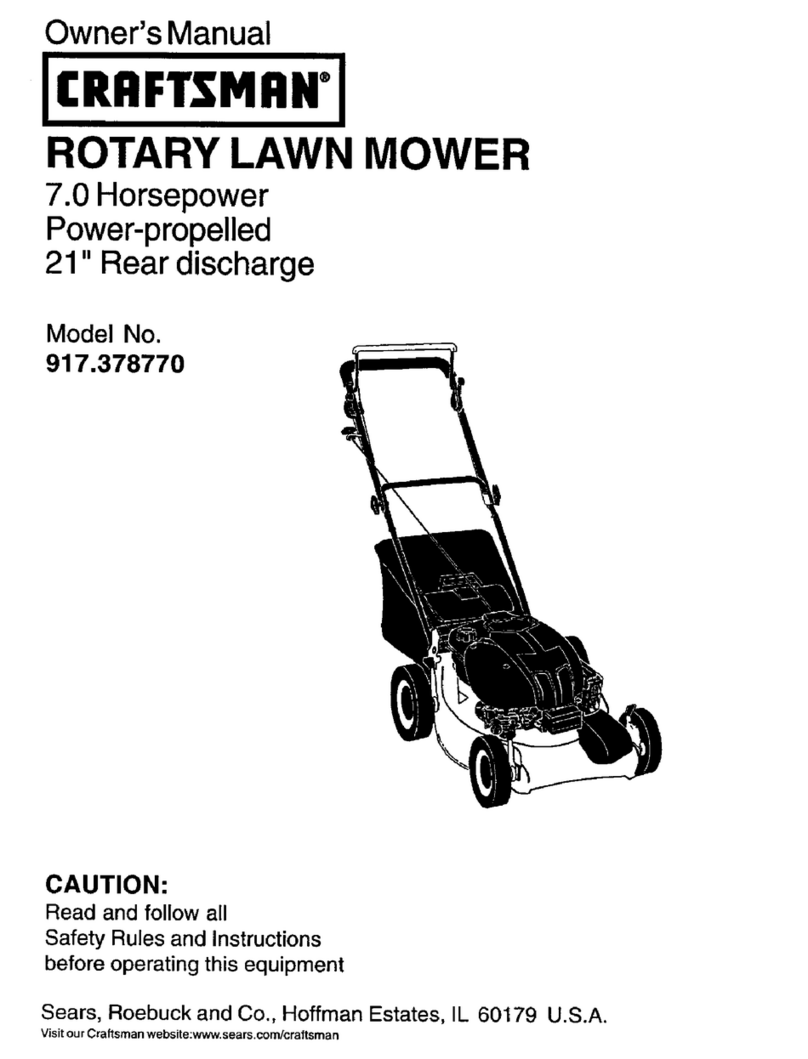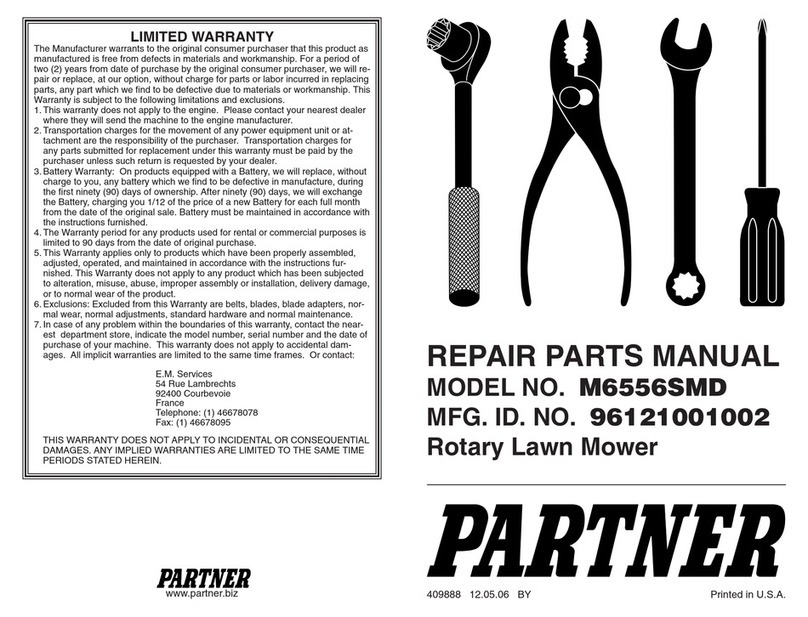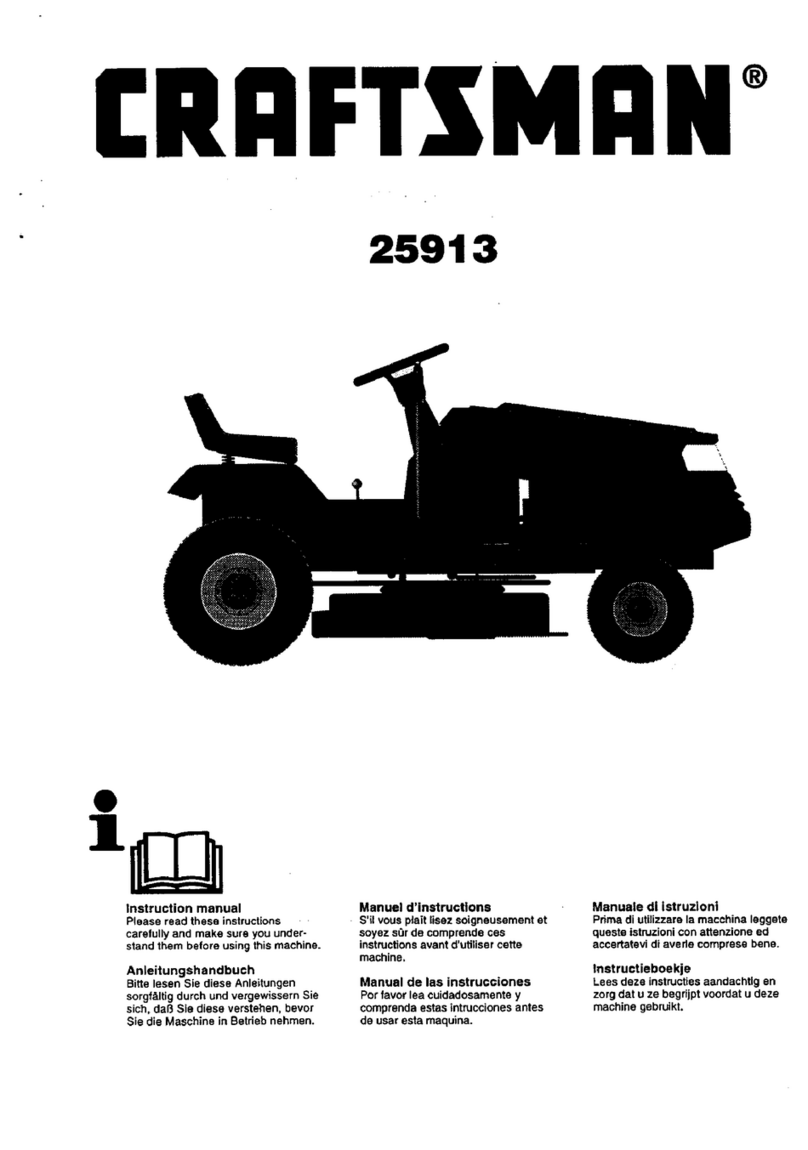
Safety
T his la wn mo w er meets or ex ceeds the
CPSC blade safety r equir ements f or
w alk-behind r otar y la wn mo w er s and the
B71.4 specifications of the American National
Standards Institute in ef fect at the time of
pr oduction.
Engine exhaust contains carbon mono xide,
an odor less, deadl y poison that can kill y ou.
Do not r un the engine indoor s or in an
enclosed ar ea.
T o ensur e maximum safety , best perf or mance,
and to gain kno wledge of the pr oduct, it is
essential that y ou and an y other operator of
the la wn mo w er r ead and under stand the
contents of this man ual bef or e the engine is
ev er star ted.
Alw a ys pa y attention to the safety aler t symbol
, whic h means Caution, W ar ning , or
Danger —“personal safety instr uction." F ailure to
comply with the instr uction ma y result in personal
injur y or death.
Improper using or maintaining this la wn mo w er
can result in injur y or death. T o reduce this
potential, comply with the follo wing safety
instr uctions .
General Lawn Mower Safety
T his la wn mo w er is capable of amputating hands
and feet and of thro wing objects . F ailure to
obser v e the follo wing safety instr uctions could
result in serious injur y or death.
Training
•R ead this Operator’ s Manual carefully . Be
thoroughly familiar with the controls and the
proper use of the la wn mo w er before star ting
it.
•Nev er allo w c hildren to operate the la wn
mo w er . Local regulations ma y restrict the ag e
of the operator .
•Nev er allo w adults unfamiliar with these
instr uctions to operate the la wn mo w er .
•Nev er mo w while people (especially c hildren)
or pets are nearb y . Stop the la wn mo w er if
any one enters the area.
•T ragic accidents can occur if the operator is
not aler t to the presence of c hildren. Children
are often attracted to the la wn mo w er and the
mo wing acti vity . Nev er assume that c hildren
will remain where y ou last sa w them.
•K ee p c hildren out of the mo wing area and
under the w atc hful care of a responsible adult.
•Be aler t and tur n the la wn mo w er off if
c hildren enter the area.
•Use extra care when approac hing blind cor ners ,
shr ubs , trees , or other objects that ma y obscure
vision.
•K ee p in mind that the operator or user is
responsible for accidents or hazards occur ring
to other people or their proper ty .
•See the man ufacturer’ s instr uctions for proper
operation and installation of accessories . Use
only the accessories that are appro v ed b y the
man ufacturer .
Preparation
•T horoughly inspect the area where y ou will use
the la wn mo w er , and remo v e all stones , stic ks ,
wires , bones , and other foreign objects .
•W hile mo wing, alw a ys w ear substantial
footw ear and long trousers .
•Do not operate the la wn mo w er when barefoot
or w earing open sandals .
•Alw a ys w ear safety g og gles or safety glasses
with side shields when operating the la wn
mo w er .
•W ar ning: Gasoline is highly flammable . T ak e
the follo wing precautions:
– Store fuel in containers specifically designed
for this pur pose .
– R efuel outdoors only and do not smok e
while refuelling .
– Add fuel before star ting the engine . Nev er
remo v e the cap of the fuel tank or add
g asoline while the engine is r unning or
when the engine is hot.
– If g asoline is spilled, do not attempt to star t
the engine . Mo v e the la wn mo w er a w a y
from the area of spillag e to a v oid creating
4
